By: Lisa Krimsky, Lauren Butler, Leroy Creswell, Vincent Encomio, Ken Gioeli, Yvette Goodiel, Josh Kutyna, Nicki Munroe, Kate Rotindo
With all of the press regarding harmful algal blooms in the state of Florida, it is sometimes hard to remember that not all algae are bad. In fact, most algae are good. They are the foundation of our aquatic food webs, they are responsible for a portion of the air we breathe, and as a group of extension agents from the southeast district learned last month – they can help remove nutrients from urban and agricultural stormwater runoff.
Egret Marsh Stormwater Park and Wildlife Sanctuary in Indian River County utilizes a technology known as an Algae Turf Scrubber (ATS) to removed dissolved nutrients from a drainage canal before it enters the Indian River Lagoon. Algae turf scrubbers are not new and one of the first patents was submitted by the Smithsonian Institution in the early 1980s. In fact, a version can be seen at their aquarium in Ft. Pierce where it is used to treat excess nutrients from a fish tank.
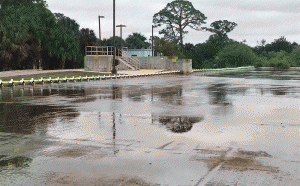
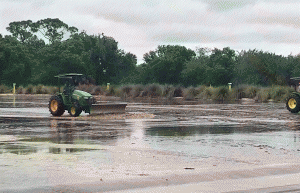
The Egret Marsh ATS is obviously a much larger system, scaled-up to filter 8 to 10 million gallons of water each day. However, the concept is the same. This nature-based system drains canal and stormwater over a concrete slab on which algae grows. The algae naturally remove much of the excess nutrients – primarily nitrogen and phosphorus – as it grows. The treated water then flows into a downstream polishing pond and constructed treatment wetland where it continues to get cleaned. The nutrient-fed algae get rotationally scraped approximately every 2-weeks and left to dry before being disposed of at the landfill. The scraping allows for new algae growth which maximizes the nutrient removal efficiency of the ATS.
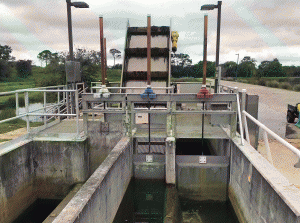
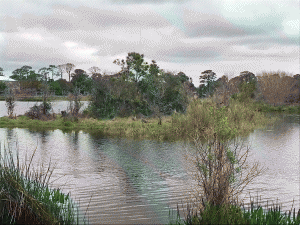
This 4.6 acre “algae farm” removes approximately 32,000 lbs of total nitrogen and 3,000 lbs of total phosphorus from canal water that would otherwise enter the Indian River Lagoon. The additional 30+ acres of ponds and wetlands create a haven for wildlife that has become a favorite spot of the birding community. Algal farm and wildlife tours are managed by the Indian River County Stormwater Division. As the extension agents have learned with our visit, sometimes the best solutions come from nature.
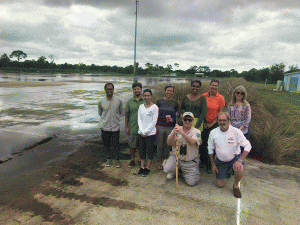
 0
0
